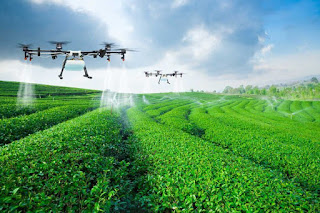Blockchain: An elementary prelude
Image source: kryptomoney
Blockchain is here!! Everyone
is talking about the blockchain technology, which is anticipated to transform
the socio-economic scene of the world. What is this Blockchain technology? Are
you wondering too? This technology is
largely recognized for its connotation with the Bitcoin technology, but that’s
not entirely true. This technology is way beyond cryptocurrency; from
preventing monetary frauds till healthcare till retail.
In this blog, I am
explaining this technology in the most elementary way, its structure, and its
uses.
What
is the Blockchain technology?
Blockchain, originally
called as block chain, is an endlessly expanding list of records, referred as
blocks, which are connected and protected by cryptography. You can consider blockchain as a huge distributed ledger, storing
records of all (digital) transaction which can’t be modified or changed.
With every new
transaction, a block gets added and contains ‘encrypted’ information of the
transaction like source, destination, timestamp etc. The data of blockchain is
accessible to everyone who wants the information, but the transactions are
recorded and processed without any third-party involvement like a bank.
This process continues
forever, adding new blocks, expanding the blockchain and providing trustworthy
public records. Besides being updated, the chain and its blocks are spread
crosswise a network to the vast number of machines.
Why
did the Blockchain technology come into existence?
The most important
reason behind this technology coming into existence was the drawback in the
traditional banking system. Like, if you are transferring money to your family
or friends abroad, then the transfer is delayed by a few days because the bank
must do the necessary verifications. On a similar note, in currency
transaction, bank take their cut because they are the mediators.
Hence, we had no
choice but to depend on the mediators to validate the transactions and make
sure that everything went smooth, for a nominal fee. But with Blockchain and
Bitcoin technology, we can transfer our digital assets with the luxury of an unfailing
check and the balance is in place. It
even removes the problem of double-spending by confirming that each unit was
transferred only once.
What
is the structure of Blockchain technology?
Image source: blockgeeks
The blockchain
technology is controlled independently, applying a peer-to-peer network and a
distributed timestamping server. It has 3 important parts:
Blocks:
Blocks (also referred
as nodes) hold information of valid transactions which are hashed and encoded
into a Merkle Tree. Each block contains the information of the cryptographic
hash of the previous block in the blockchain; these linked blocks further form
the complete blockchain. Peers can have different versions of the history of
the blocks sometimes. New blocks of data get added in place of over-writing the
old ones.
Decentralization:
In centralized data
controlling and manipulating data is quite common but with de-centralized data,
everyone involved has a transparent access to the data. Every block or node in
the decentralized system has a copy of the blockchain. The set of data values
is maintained by huge database replication and computational trust; there’s no
central “office” copy of the
blockchain. The only risk is the expense
involved in the resources required in maintaining and processing the huge
amount of data.
Openness:
The blockchain is an
open system which has no access control and no authority is needed to update
the information of the blockchain. The simplest GUI for blockchain is the
“mobile wallet” where the transaction is done between the two people after
identity verification. To ensure security, a proof of work is needed while
adding a new block. There is still a debate going on this with regards to the
huge data management and access control.
What
are the areas where Blockchain is used?
The implementation of
blockchain in areas of interest is under implementation and will take some time
before they are rolled out for use. Here is a list of most obvious areas that
blockchain will be used in.
Smart Contracts: In the real world, a third party is involved to make all parties follow
the terms. The blockchain ledger will remove the involvement of that third
party and the ledger will ensure that the terms are followed by the
participants once the nailed conditions are met.
Internet of Things: The data shared between the things connected over the internet needs
protection and the blockchain technology will ensure that the vast information
of the IoT network is shared only with the trusted people.
Cloud storage: Right now, we must rely on a single cloud storage provider and they have
control of our assets. With blockchain, this will be decentralized, and we will
have control of the cloud. Adding hash and storing data at multiple locations
will help in securing the data.
Digitized Identity: Blockchain technology will help in keeping digital identities safe and
away from fraud. In this, the check will be performed to verify if the
transaction was signed by a private key. Thus, only the owner would be the
person to have the private key access.
Banking and finance
domain is the only beginning of the blockchain effect, it has the potential to
transform many more industries. It can change our voting system, education
system, forecasting etc.
Please leave your comments and
thoughts below about how you think blockchain can benefit the world?




Nice article!
ReplyDelete